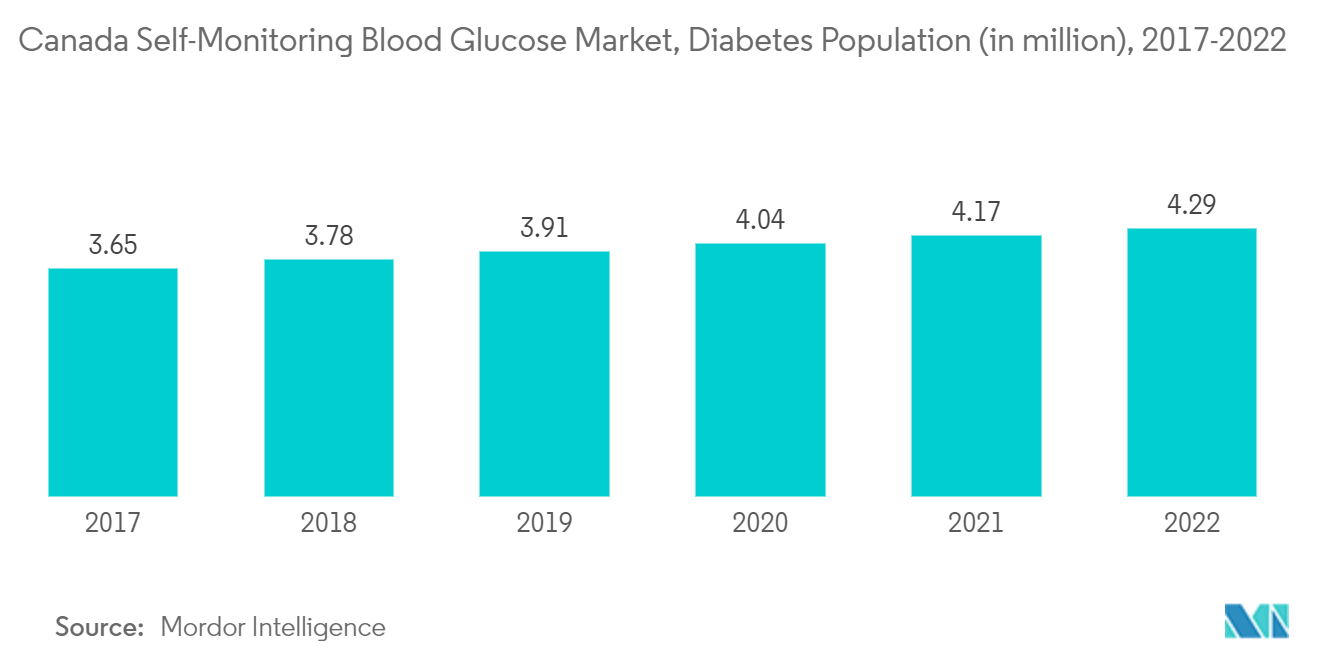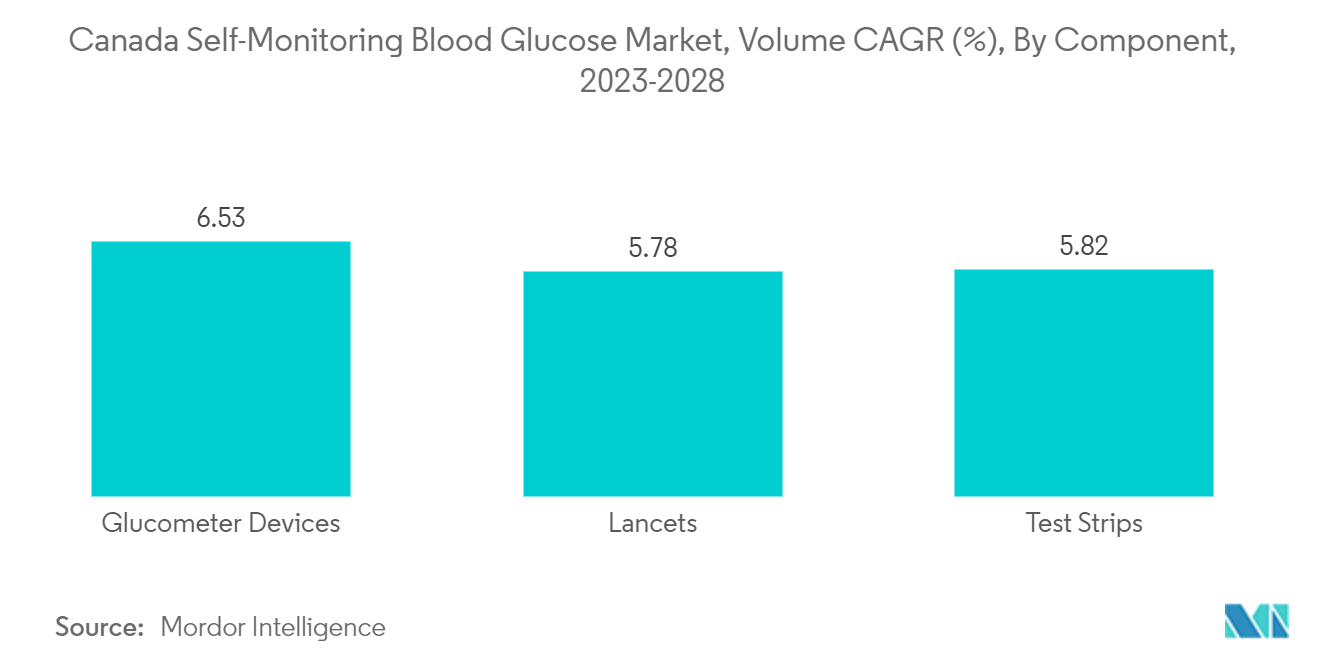Market Trends of Canada Self-Monitoring Blood Glucose Industry
Rising Diabetes Prevalence in Canada
In the current year, according to Diabetes Canada, more than 5.7 million Canadians are living with diagnosed diabetes (type 1 or type 2 diabetes); however, 11.7 million Canadians are living with diabetes or prediabetes, a condition that, if left unmanaged, can develop into type 2 diabetes. Diabetes is also costing the healthcare system USD 30 billion per year to treat people with diabetes.
Monitoring blood glucose levels is a good addition to other ways to measure glycemia, such as the A1C. It is the optimal way to confirm and appropriately treat hypoglycemia. It can provide feedback on the results of healthy behavior interventions and antihyperglycemic pharmacological treatments. It can increase one's empowerment and adherence to treatment. It can also provide information to both the person with diabetes and their diabetes healthcare team to facilitate longer-term treatment modifications and titrations as well as shorter-term treatment decisions, such as insulin dosing for people with type 1 or type 2 diabetes. In situations where A1C does not accurately reflect glycemia, monitoring blood glucose is necessary to adequately monitor glycemia.
Monitoring blood glucose works best when it's part of an education program that teaches people with diabetes how to change their behavior for the better based on their blood glucose levels and teaches healthcare providers how to change antihyperglycemic drugs based on blood glucose readings. As part of this education, people with diabetes should learn how and when to self-monitor, how to keep track of their results in an organized way, what different blood glucose levels mean, and how their actions and behaviors affect their blood glucose results.
The Canadian Diabetes Strategy (CDS) is a national partnership that includes the provinces and territories, many national health organizations and interest groups, and Aboriginal communities across the country. The goal of the CDS is to come up with and set up effective ways for Canada to prevent and control diabetes. With all of its partners' knowledge and experience at its disposal, the CDS is in a good position to figure out where the needs and gaps are and make sure that resources are put where they are needed.
Because of this, it is expected that the studied market will grow over the period of the analysis. This is because the problem is becoming more common and more people are learning about it thanks to government initiatives.

The Glucometer Devices Segment is expected to witness the highest CAGR over the forecast period
The glucometers segment is expected to have the highest CAGR of about 7.1% in the market over the next few years. This is because glucometers are being used more and more in home care settings, people are becoming more interested in self-monitoring at home, and new, more advanced glucometers have just come out.
Glucose monitoring gives people living with diabetes a more complete picture of their blood sugar levels, which can influence short- and long-term treatment decisions and improve health outcomes. It lets them and their doctors figure out the glycemic status and any negative effects, as well as how well glucose-lowering therapies work.Glucose monitoring could help people with diabetes better control their blood sugar and improve their quality of life. This could lead to physical, social, emotional, and functional benefits.
Capillary blood glucose monitoring or self-monitoring of blood glucose is one way for people living with diabetes to measure and assess their glucose levels. It uses a drop of blood from a finger prick to get a blood glucose reading using a blood glucose meter, or glucometer. People with diabetes should talk to their care team about how often and how they should be tested.In Canada, CBG test strips cost, on average, $0.79 each. Reimbursement from the government for test strips is provided through provincial drug plans and is based on the prescribed course of treatment, age, and income.
The market players are adopting various strategies, such as collaborations, partnerships, mergers, acquisitions, and expansions, to increase their market share. For instance, in May 2021, Roche Diabetes Care Canada announced a collaboration with Ellerca Health, a Toronto-based company dedicated to improving patient care through innovation and technology. The partnership included the launch of Accu-Chek and 360Care, combining Roche's Accu-Chek Guide blood glucose meter, customized home delivery of testing strips, and Ellerca's self-management digital program, 360Care, which empowers patients to be in control of their treatment schedule with access to a team of health coaches.
Thus, owing to the above-mentioned factors, it is expected to drive the segment's growth over the forecast period.

